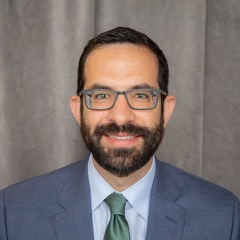If you’ve ever been challenged by explaining the job of an anesthesiologist to your children, this is the session for you. In fact, you’re encouraged to bring your children to Sunday’s fun, interactive workshop “A Day in the Life of an Anesthesiologist.”

Susan M. Martinelli, M.D.
North Carolina Anesthesiologists Susan M. Martinelli, M.D., and Robert Isaak, D.O., lead this hands-on session that follows a typical (and not so typical) day in anesthesiology. The event is being organized and run by faculty from the University of North Carolina at Chapel Hill with assistance from the ASA Committee on Young Physicians.
“This program has been presented to family and friends of our department for the past three years,” Dr. Isaak said. “In the very first session, the mother of a resident in our department said, with tears running down her face, ‘I had no idea that my daughter really saves people’s lives in her job’ and that she had ‘a new level of respect for the commitment my daughter made to this career.’”
A Day in the Life of an Anesthesiologist
1:15–4:15 p.m.
Sunday
W102B
These stories and more are the inspiration behind the session, he said. When family and friends have a greater understanding and appreciation of the role and commitments of an anesthesiologist, they can better relate and are more capable of providing support during good and bad times.

Robert Isaak, D.O.
According to Dr. Isaak, this support may make the difference in maintaining a well-state for the anesthesiologist and help minimize the potential consequences of burnout. As Dr. Martinelli notes, an anesthesiology career often impacts one’s personal life. Anesthesiologists have little control over their schedule, and it’s difficult to anticipate when the day will come to an end.
As for children, the workshop is intended for kids between the ages of 5 and 12, which can be a difficult period to understand medical science. When talking to young kids, Dr. Martinelli explains that an anesthesiologist is a doctor that puts patients to sleep (but it’s a different kind of sleep than when you go to bed at night). She underscores the most important fact – when the patient wakes up, they get a popsicle! Dr. Isaak tells children he keeps them asleep and safe during surgery, gives them medicines to prevent pain and makes sure they wake up quickly so they can go home and get back to doing the fun things in life.
“Many people think anesthesiologists don’t have much patient interaction. However, when you meet a scared patient or family member before a large, complex surgery, it is a wonderful feeling to be able to explain what we will do and provide reassurance and compassion to the patient and their family,” Dr. Martinelli said. “Often we work harder than anyone realizes to keep the patient safe during the surgery. Knowing we are a vital part of the success of a significant, life-changing operation is very rewarding.”
In sharing her own Day in the Life experience with her then 5-year-old twins, Dr. Martinelli said her children understood that her husband, an outpatient primary care physician, was a doctor. He had regular, daytime hours. Their pediatrician was at his office, so they had a basic understanding of what he did. Her job was much more difficult for them to comprehend. The kids didn’t think she was a doctor, no matter how many times they were told. Her hours often require nights and weekends. They didn’t understand why the hospital was “always open.”
“They had no idea what I did when I went to work. I brought them to our ‘Day in the Life’ program. I taught them how to intubate. They saw their blood vessels on ultrasound. They used an anesthesia machine on a stuffed animal. They finally had some concept of what I did,” she said. “After that, they asked me more questions about my work. They understood that I was a doctor, too. And they have asked when they could participate in Anesthesia Day again!”
According to Dr. Isaak, the greatest joy of this career is having the knowledge, expertise and confidence to safely and efficiently care for patients across a wide range of illnesses and surgical conditions. Although Dr. Martinelli also greatly enjoys the patient care aspect, she said she is most proud of helping her residents develop into competent anesthesiologists.
“When our residents start with us, they know very little about anesthesiology, and we provide close supervision and guidance in every step of the case. Three years later, they are functioning independently. We can stand in the corner of the room and let them run the show,” she said. “The privilege of taking part in this transformation is one of the greatest joys I have in my career.”
There is no cost to participate in this session, but you must sign up in advance as space is limited. Children will be given a stuffed animal to take to the “stuffed animal hospital,” and they can color and decorate masks, learn about airway management and use ultrasound. Don’t worry if you aren’t able to make it this year. The event is scheduled for ANESTHESIOLOGY 2020. Drs. Martinelli and Isaak are hoping to run an adult track in addition to the kid track during next year’s program.
Return to Archive Index